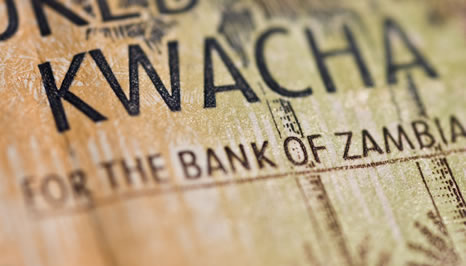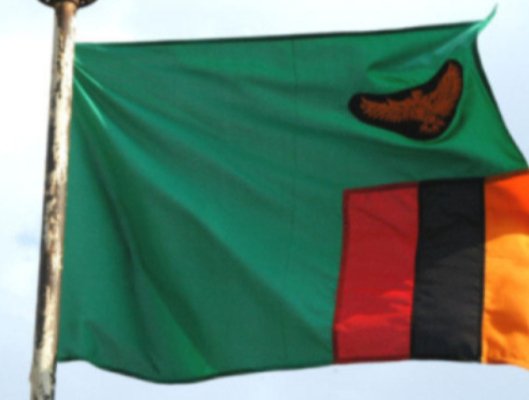Fitch Ratings has affirmed Zambia's Long-Term Foreign-Currency Issuer Default Rating (IDR) at 'CCC'.
Key Rating Drivers
Zambia's 'CCC' rating reflects the government's high external financing requirements, combined with a fall in official foreign exchange reserves; high and rising government debt in the context of an ambitious capital expenditure programme; and constrained access to domestic and external financing.
Zambia's reported fiscal outturns indicate that the deficit has narrowed on a cash basis in 2019, but the build-up of domestic arrears and the materialisation of other liabilities on the government's balance sheet have kept government debt on a rising path. Fitch forecasts general government debt (including arrears) to rise to 87.4% of GDP at end-2019, well above the current 'B' category median of 57.5% and more than twice the end-2014 level of 32.2%. We expect that debt will continue to rise in 2020 to just below 90% of GDP and the debt-to-revenue ratio will rise to 440%, compared with the 2019 'B' category median of 259%.
The authorities report that revenue has exceeded their budget targets this year, while current expenditure, excluding interest costs, has been below target. Fitch forecasts the cash deficit to narrow to 5.6% of GDP in 2019, from 7.6% in 2018, but notes that the building of arrears will take the deficit to closer to 9% of GDP on a commitment basis. The execution of capital expenditure has already exceeded its 2019 budget target of ZMW20.6 billion (7% of GDP), indicating that the government continues with its ambitious infrastructure spending programme.
The 2020 Budget submitted to parliament in September keeps the cash deficit at 5.5% of GDP. However, the budget increases total expenditure to ZMW106 billion (32.4% of forecast GDP) and forecasts revenue to increase to 22% of GDP, from approximately 20% in 2019. Government revenue averaged 19% of GDP from 2014 to 2018 and an increase to 22% in 2020 is unlikely. The 2020 budget does not include a breakdown of spending by category, but it does note that approximately ZMW30 billion will be financed from external sources; most likely project loans, which implies that the government will continue to execute capital expenditure at levels similar to 2019. The inability to access other sources of external financing means that the government will have to rely heavily on the domestic debt market, where the weighted average interest rate has risen to 24.7% for Treasury bills and 30.8% for bonds.
The authorities continue to engage with the IMF, although Fitch believes that a programme will not be forthcoming until the government demonstrates its willingness and ability to decrease its externally financed capital spending. Cutting external borrowing will be difficult, as Zambia continues to execute projects from an existing pipeline of contracted debt. The authorities have also previously announced their intention of re-profiling existing debt with bilateral lenders, most notable Chinese lenders, but have yet to reach any public agreement.
Even if Zambia is able to reverse its fiscal course in 2020, the government will still face substantial external debt obligations over the next several years. These include Eurobond repayments of USD750 million in September 2022 and USD1 billion in April 2024. In 2020, Fitch estimates that Zambia will have to meet approximately USD1.5 billion in public external debt service, including interest payments.
The government was able to meet its external obligations in 2019 by drawing on the Bank of Zambia's (BoZ) foreign currency reserves, which were bolstered by opportunistic FX purchases during a period of falling external receipts. We expect gross international reserves to have fallen to USD1.4 billion in 2019 (1.4 months of current external payments) and to decline further in 2020. In Fitch's view, the main source of default risk comes from the inability to source additional external financing to meet the 2022 Eurobond repayment. Nonetheless, continued reliance on the FX market to source dollars increases the risk of rapid kwacha devaluation, which would make it increasingly difficult to meet external interest payments.
Fitch forecasts that lower copper prices and mostly flat production will lead a widening of the current account deficit (CAD) in 2020, to 2.5% of GDP and 3.1% in 2021. Copper export receipts fell by 38% yoy through 3Q19, but the CAD was contained by import compression. Lower rainfall has led to a power deficit, as Zambia's energy mix is dominated by hydropower. We expect that the need for imported electricity will begin increasing the import bill in 4Q19, which will add to Zambia's external imbalances.
New international investment position (IIP) data show that Zambia has been a net external debtor since 2015. The combination of increasing public external debt and the fall in private external assets has taken Zambia to a net external debtor of 80.2% of GDP in 2019 (peer median 28.8%), from a net creditor of 31.4% in 2014.
Fitch expects GDP growth to accelerate to 2.5% in 2020, from 2% in 2019. The agricultural sector has been contracting since 4Q17 owing to drought, but forecasts of a normal 2019/20 rainy season point towards a recovery. Mining output continues to be negatively impacted by an adversarial relationship between the government and the mining sector. We expect copper output to contract by 7% in 2019, to 800 kMt, from 857 kMt in 2018. A recovery in power generation capacity could prevent a further contraction in mining output, but we do not expect significant production growth in 2020.
Inflation had accelerated to 10.8% yoy as of November 2019, largely owing to food inflation, and will continue to accelerate in 2020. However, the BOZ began hiking the monetary policy rate in May, increasing it by a total of 175bp to 11.5% in 2019. A higher policy rate will also support the exchange rate, which will continue to feel downward pressure from Zambia's external financing needs.
The asset quality of Zambian banks has improved, despite the building of government arrears, although the improvement comes from a low base. The BOZ reports that non-performing loans fell to 9.8% of total loans in 1H19, from 11% at end-2018. Credit to the private sector returned to positive real growth in 2018 after two years of negative growth and further accelerated in early 2019, but economic headwinds and monetary tightening have slowed credit growth in 2H19.
Zambia's sovereign ratings remain constrained by weak development indicators. GDP per capita remains well below the current 'B' category median. Zambia has historically exhibited political stability, but the country experienced some protests and violence following the close 2016 presidential election. The potential for increased instability will increase as the 2021 general elections approach.



































